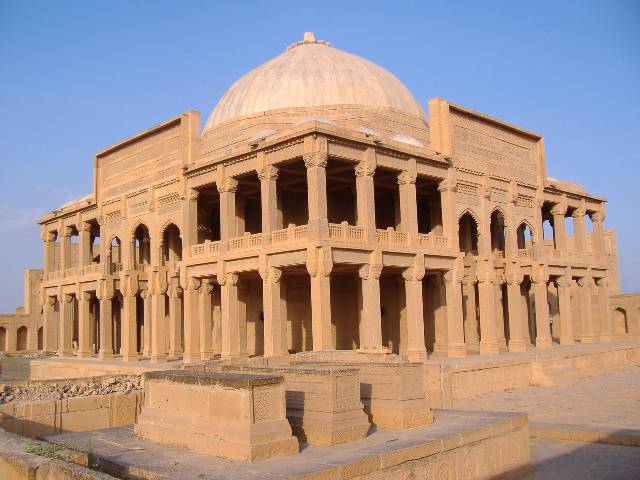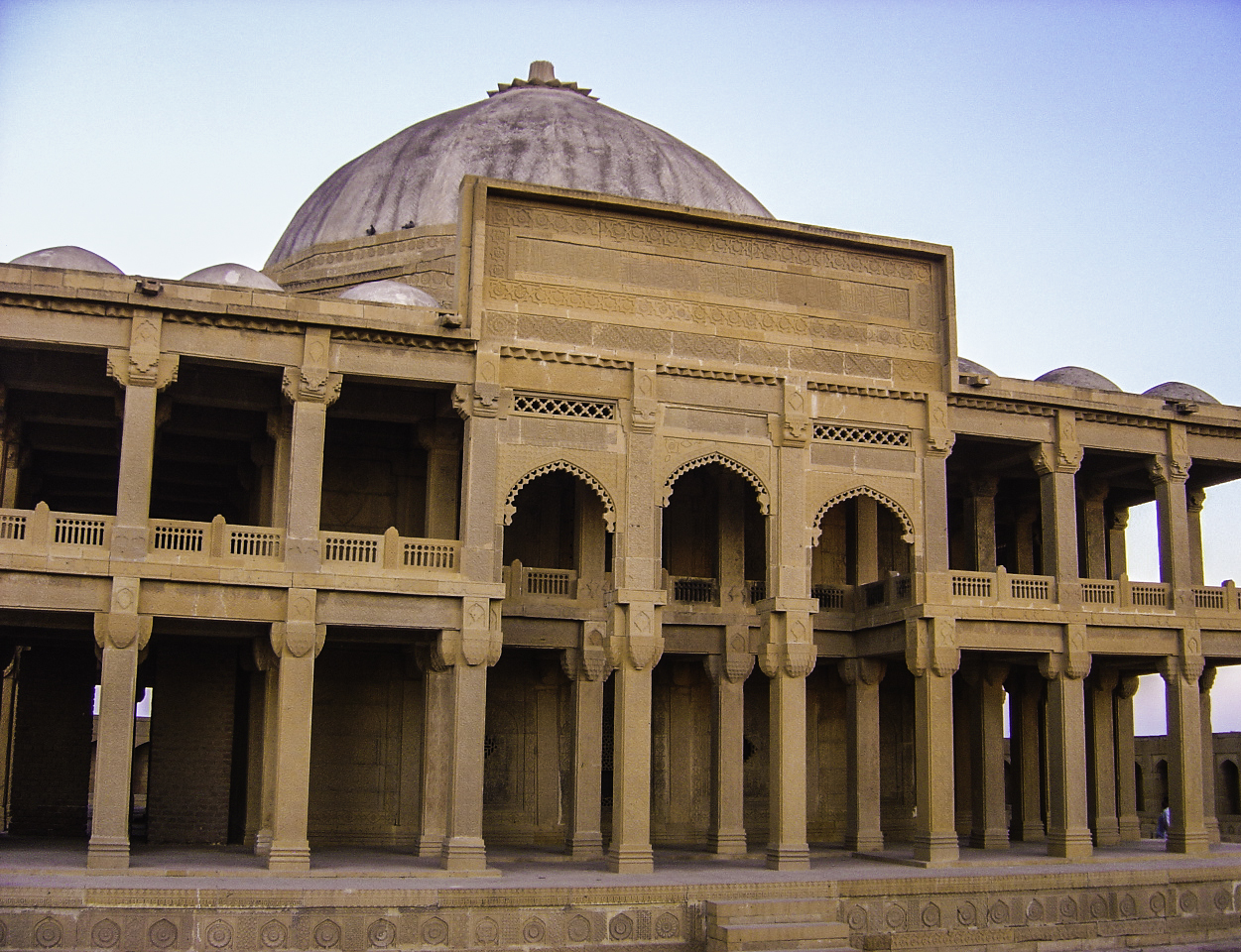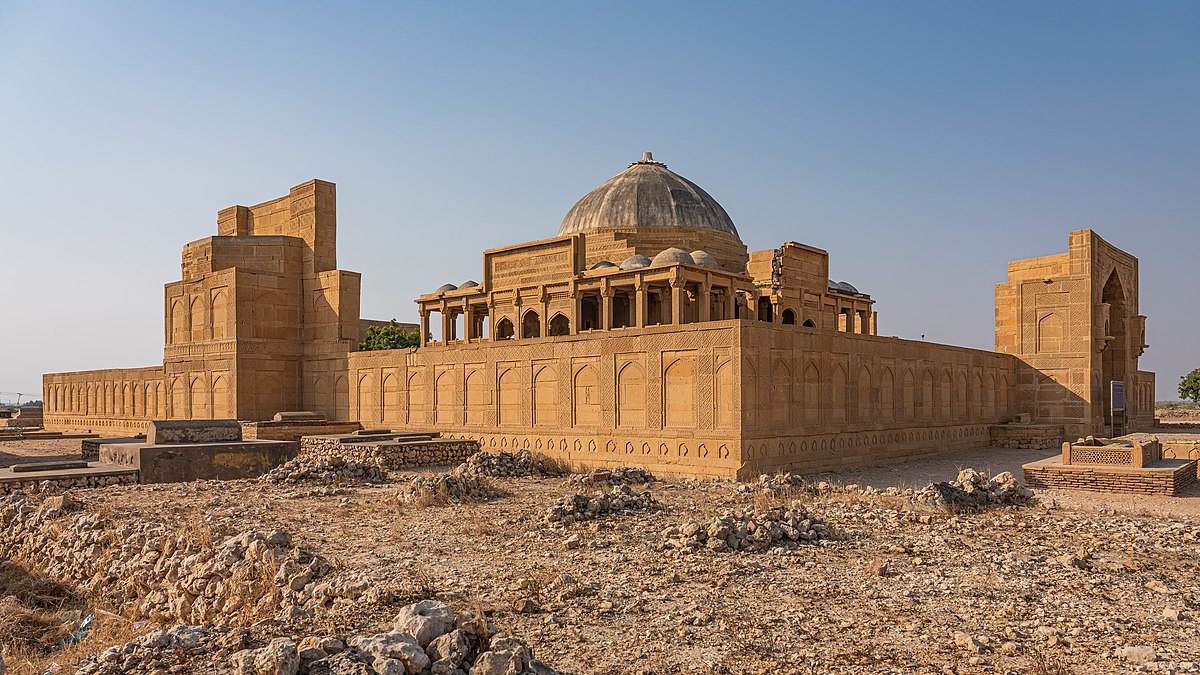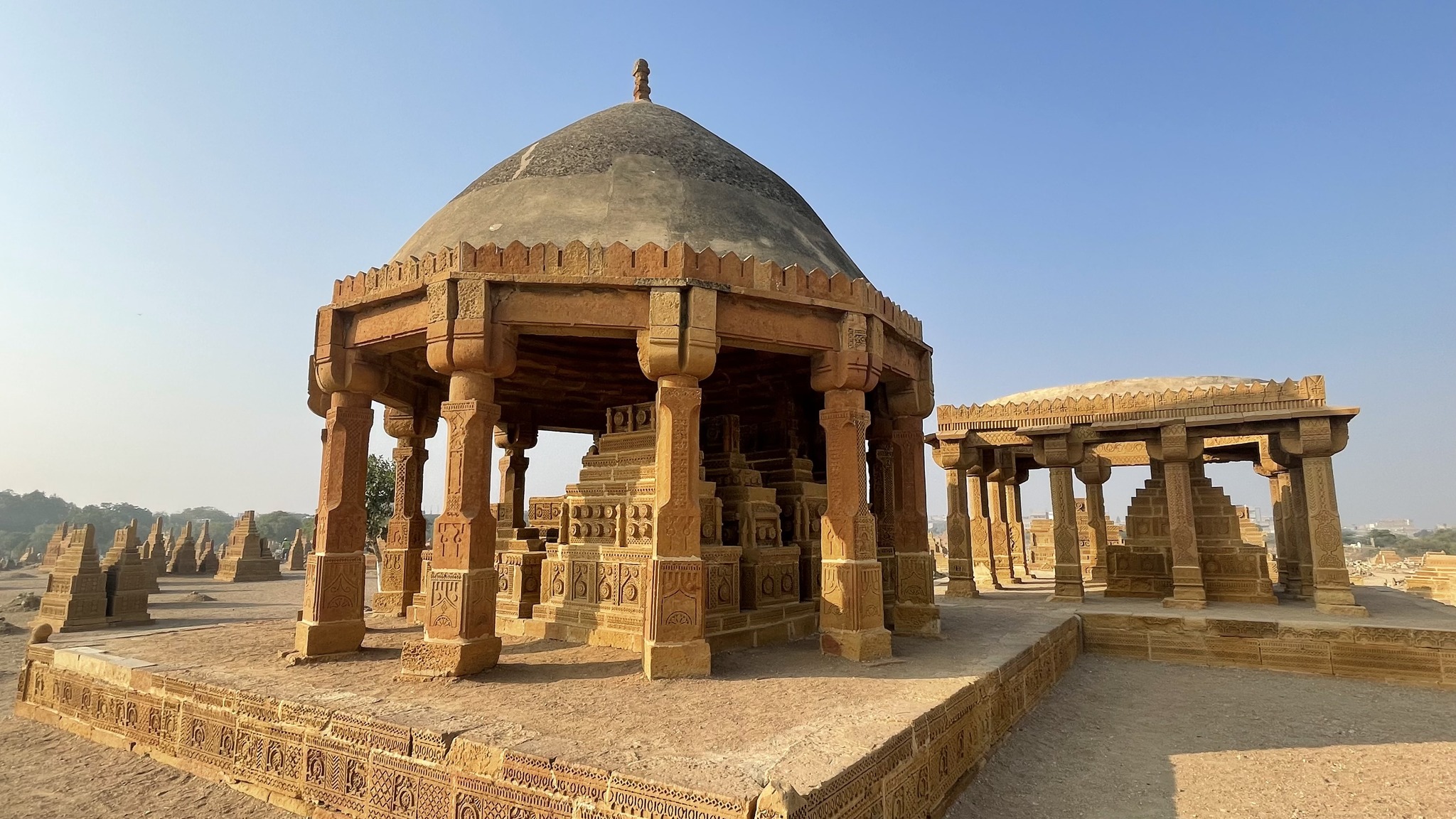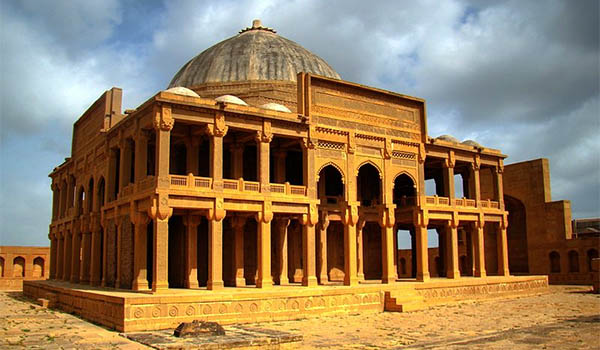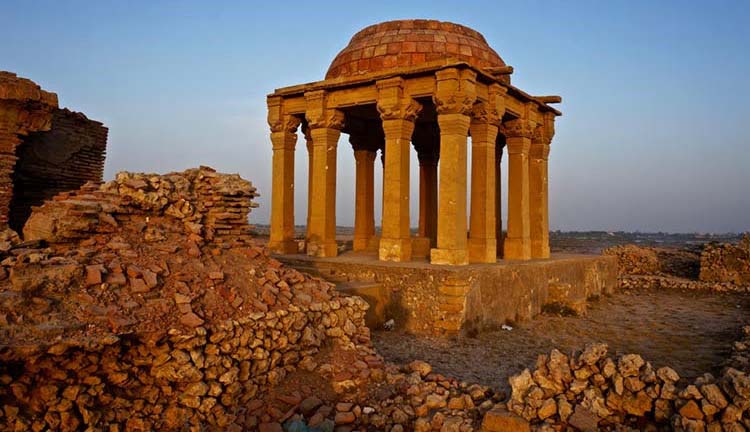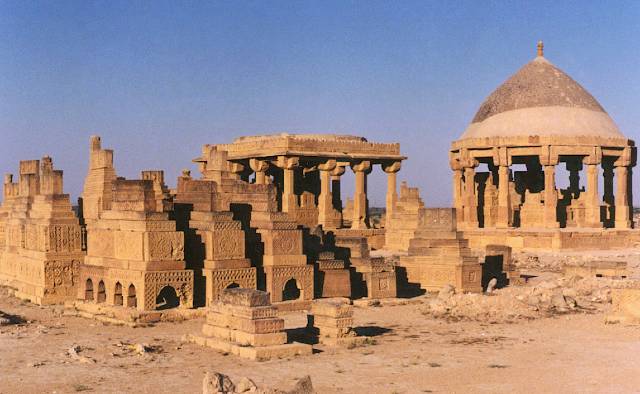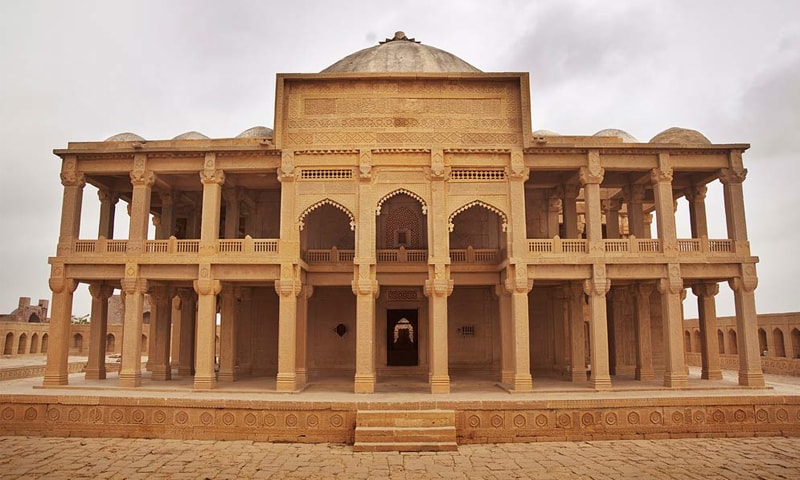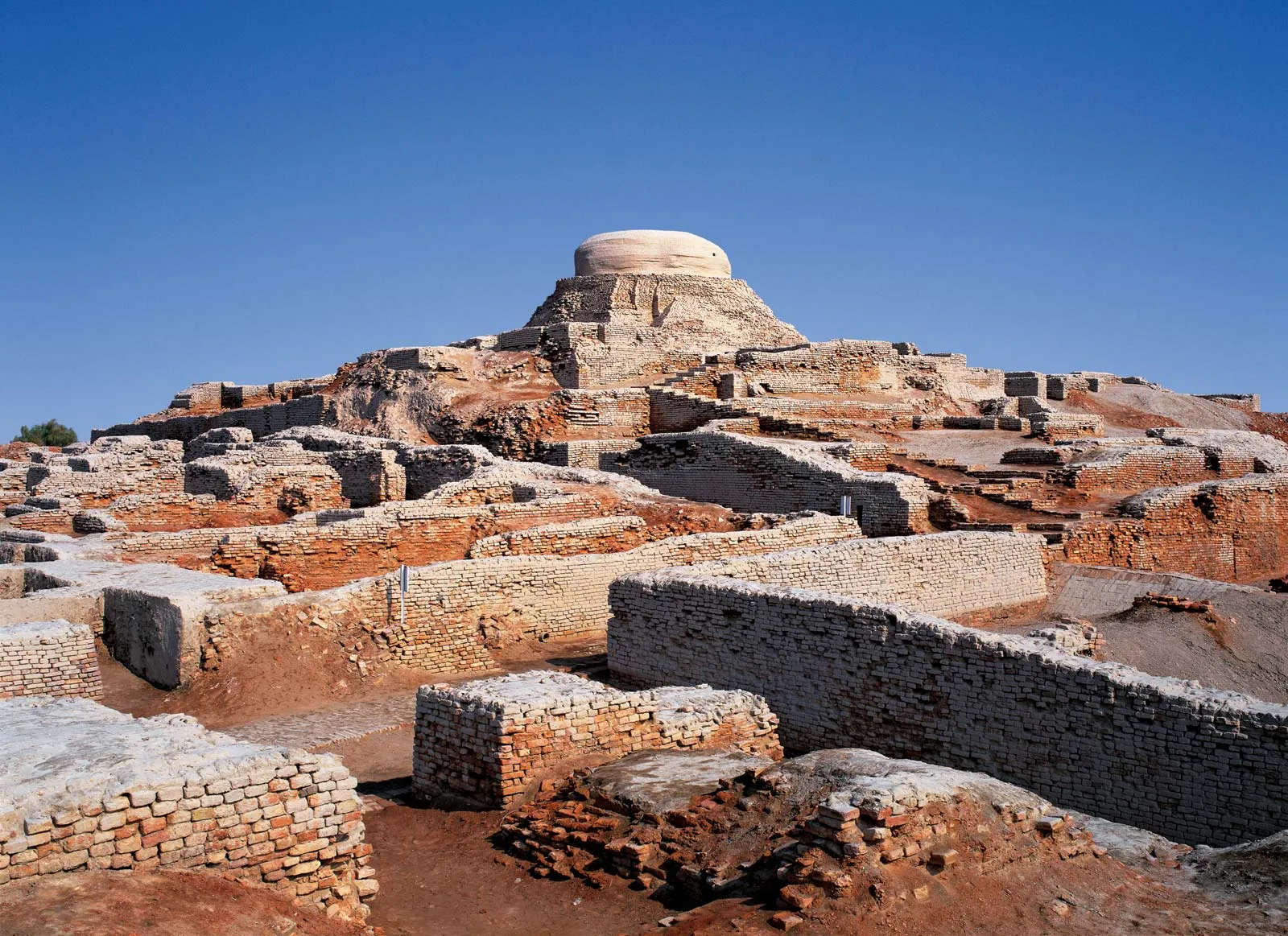
About the Makli Necropolis
A Timeless Heritage of Sindh
Nestled near the ancient city of Thatta in Pakistan's Sindh province, Makli Necropolis stands as one of the largest and most significant funerary sites in the world. Sprawling over an area of approximately 10 square kilometers, this UNESCO World Heritage Site is home to around 500,000 tombs, mausoleums, and graves, dating back from the 14th to the 18th centuries. The necropolis is not just a graveyard; it is a monumental testament to the cultural, religious, and architectural richness of Sindh during the rule of various dynasties.
Historical Background
Makli's history is intertwined with Thatta, a city that served as a prominent center for Islamic scholarship, trade, and politics in medieval South Asia. The origin of the site is linked to the Sufi saint Shaikh Jamali, also known as Jam Tamachi or Jam Nizamuddin, who is said to have chosen the hill of Makli as his final resting place. His spiritual following inspired others to be buried nearby, giving rise to a growing necropolis.
The site gained prominence during the Samma dynasty (1352–1520), followed by the Arghun, Tarkhan, and later the Mughal rulers. Each dynasty contributed to Makli's development, commissioning mausoleums and monuments that reflect the changing architectural styles and the intermingling of Persian, Central Asian, Hindu, and indigenous Islamic elements.
Architectural Marvels
Makli’s tombs are more than burial sites; they are architectural masterpieces. Built from sandstone, glazed tiles, and bricks, the structures range from simple graves to massive mausoleums decorated with intricate carvings, Arabic calligraphy, geometric patterns, and floral designs.
One of the most prominent monuments is the tomb of Isa Khan Tarkhan II, a Mughal governor of Sindh. His mausoleum features a grand dome, delicate stone carvings, and elaborate tile work that rivals any Mughal architecture in the Indian subcontinent. Another striking example is the tomb of Jam Nizamuddin II, a Samma ruler, known for its Persian-style architecture, blue tile embellishments, and a large dome.
The diverse architectural styles present at Makli reflect the cultural fusion in Sindh, a melting pot of civilizations for centuries. While the older tombs are built in a more austere style with minimal ornamentation, the later monuments are more elaborate, showcasing the increasing influence of Mughal aesthetics.
Cultural and Religious Significance
Makli is not only a historical and architectural treasure but also a spiritual and cultural hub. The site represents the Sufi tradition of Sindh, which emphasizes love, tolerance, and unity. Many of the tombs belong to Sufi saints, scholars, poets, and mystics, whose teachings continue to influence Sindhi culture and values.
Every year, pilgrims visit the necropolis to pay homage to these saints, particularly during Urs festivals, celebrating the death anniversaries of revered figures. These events are marked by devotional music, Qawwalis, and communal prayers, reflecting the deep spiritual connection between the people and their sacred heritage.
Moreover, Makli also served as a symbol of power and prestige. Royals, nobles, and wealthy merchants chose to be buried here to gain spiritual merit and social recognition. This tradition underscores the complex interplay between faith, politics, and art in medieval Sindh.
UNESCO World Heritage Site
In 1981, Makli Necropolis was inscribed as a UNESCO World Heritage Site, acknowledging its outstanding universal value. UNESCO recognized Makli for its architectural excellence, the artistic achievements of its monuments, and its significance in the cultural history of South Asia.
The site stands as a unique blend of funerary architecture, comparable in scale and significance to the Valley of the Kings in Egypt or the tombs of Chinese emperors. It tells the story of a civilization that embraced pluralism, spirituality, and aesthetic expression.
Challenges and Preservation
Despite its grandeur and global recognition, Makli faces numerous challenges in preservation. Environmental factors such as salinity, wind erosion, and seasonal flooding have caused significant damage to many monuments. Uncontrolled vegetation growth and soil degradation further threaten the structural integrity of the tombs.
Human-induced factors also contribute to the decay. Neglect, vandalism, unregulated tourism, and urban encroachment have taken a toll on the site. The lack of proper fencing, security, and visitor management makes the tombs vulnerable to theft and destruction.
Efforts have been made by UNESCO, the Sindh Culture Department, and various NGOs to conserve and restore parts of the necropolis. However, progress has been slow due to limited funding, technical challenges, and bureaucratic hurdles.
There is a growing need for community involvement, international cooperation, and sustainable tourism strategies to ensure the long-term preservation of Makli. Raising awareness among locals, students, and tourists about the site's importance can also foster a sense of ownership and responsibility.
The Need for Sustainable Tourism
Makli has great potential as a cultural tourism destination, yet it remains largely underdeveloped and under-visited. Developing proper infrastructure such as visitor centers, guided tours, and educational programs could enhance the experience while ensuring the protection of the site.
Responsible tourism can create economic opportunities for local communities, especially in Thatta, while promoting heritage appreciation. However, such development must be sensitive to the cultural and spiritual significance of the necropolis, avoiding over-commercialization.
Conclusion
Makli Necropolis is a silent city of the dead that speaks volumes about the living civilizations of Sindh’s past. It is a place where history, spirituality, and art converge, offering a window into the region’s rich cultural legacy. As one of the world’s largest necropolises, Makli is not just a heritage of Sindh or Pakistan but of all humanity.
Its majestic tombs, spiritual aura, and historical depth make it a site worth preserving and cherishing. While challenges abound, the collective efforts of governments, cultural bodies, scholars, and citizens can revive this timeless monument, ensuring it continues to inspire generations to come.
Address: QV2X+P6R, Makli, Pakistan
